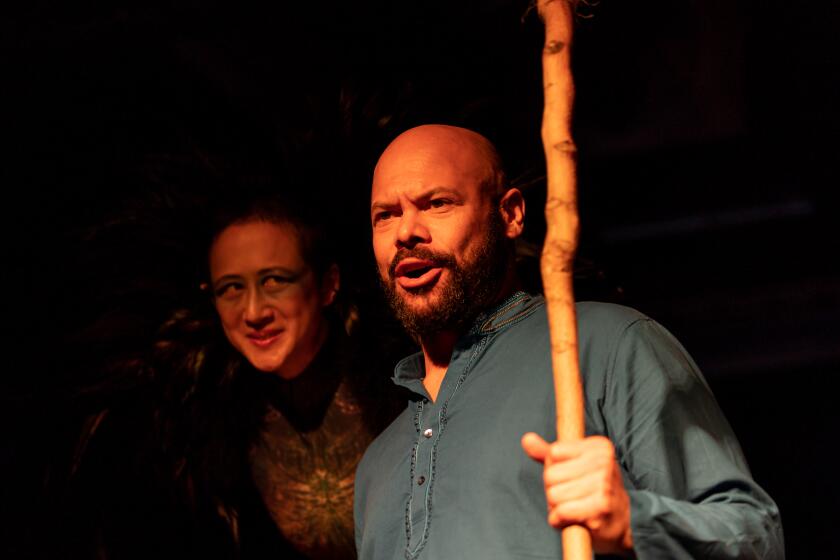His fluid improv
Pianist Keith Jarrett’s first Los Angeles concert of solo improvisations in more than two decades brought a capacity crowd Wednesday to the Walt Disney Concert Hall, with a long line of optimists waiting at the ticket booth hoping for cancellations.
It wasn’t just the rarity of Jarrett’s appearance that attracted such interest. It was also the rarity of what he does. The premise of his improvisations is easy to define, far more difficult to accomplish: sit down at the piano and begin to play -- with no set tunes, chord changes or conceptualized moods. Spontaneous, unstructured music-making of this sort may be the most mysterious and elusive of arts. No wonder it is attempted by so few.
The opening half of the program consisted of six such inventions -- miniatures, actually -- in which one had the distinct feeling that Jarrett was gradually finding his way back into the territory of solo improvisation. Illuminating different musical areas, they were also filled with inner musical connections, in which the last three inventions resonated with the first three.
The first was filled with busy, overlapping, two-handed arpeggios -- a way, perhaps to loosen the fingers and kick-start the imagination. A trace of jazz surfaced in the second via a boogie-woogie styled left-hand figure that nonetheless avoided a direct encounter with the blues. A rhapsodic melody took the spotlight in the third, floating over gentle, supportive chording.
In the fourth segment, Jarrett returned to the bravura note production of the first invention, adding a middle section dominated by dramatic block chording. The fifth invention, echoing the third, brought another roving chordal melody, never quite finding full resolution. And the final invention, like the second, found another jazz reference, with Jarrett’s left hand improvising freely over a hypnotic, ostinato bass line.
Impressive as this first suite of six pieces may have been, the brevity of its individual parts prevented it from realizing the scope and the substance that Jarrett achieved in his much lauded solo improvisations of the ‘70s and ‘80s. But any doubts about his present ability to reach that level of creativity dissipated with the first invention of the program’s second half.
Much longer than any of the opening pieces, delivered with a willingness to allow his imagination to pace its way through a complementary succession of sounds and silences, the work had the feeling of a stunningly complete, instant composition. Working with several interlocking musical motifs, rendering them through a rich range, Jarrett found the perfect balance between his virtuosic technique and his fertile musicality.
After the denouement of a peaceful, anthemic melody to close the improvisations, he returned for three encores: a sprightly romp through the blues, a gorgeously lyrical version of “It Might As Well Be Spring” and a rendering of “Stardust” that emphasized the song’s verse.
The contrast between the improvisations and the familiar Jarrett takes on song standards was not as jarring as one might expect. It offered, instead, a supplemental perspective -- and a fascinating one, at that -- on the abundant artistry and skillfulness of one of American music’s masterful artists.
More to Read
The biggest entertainment stories
Get our big stories about Hollywood, film, television, music, arts, culture and more right in your inbox as soon as they publish.
You may occasionally receive promotional content from the Los Angeles Times.








